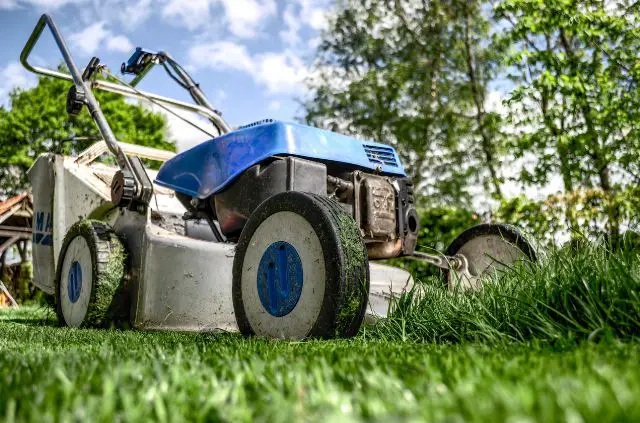Best Soil Temperature to Plant Grass Seed
Planting grass seed is both an art and a science. You can’t just dump out a bag and expect the lawn to transform into lush, green turf. But is there a best soil temperature to plant new grass seed?
Soil temperatures between 50-65 °F create ideal conditions for germination. You can run into problems when temperatures start to drop below, or above this number.
The dirt will be too cold (or warm) for grass seed to germinate. This can create a frustrating situation for homeowners and you’ll be staring at grass seed for weeks, wondering what you did wrong.
Best Time of Year to Plant Grass Seed
Knowing when to plant grass seed is just as important as following the correct process. This makes the fall the best time of year to plant grass seed in most climates.
During this time of year, sun isn’t as strong and there’s typically more rain. The air temperature also begins to drop and the soil stays warm. That means when the ground is between 50-65 °F you can start planting.

If you’re looking to get an accurate measurement, it helps to use a soil temperature gauge. This device isn’t necessary, but it can be a helpful tool if you live somewhere with frequent temperature dips.
Another possible time of year to plant new grass seed is during the late spring and early summer. The only thing to remember is that you will need to water throughout the summer, to prevent grass from turning brown in the heat.
Best Time of Year to Plant Grass Seed in Northeast
New England and the Northeast United States is a beautiful location with changing seasons. But when it comes to planting and growing new grass, you will have a short time frame.
This makes mid-August to the late-September the best time of year to plant grass seed. Warm and comfortable days paired with cooler nights create the conditions for germination.
Remember that this is a general time frame, because it will certainly get colder in Maine before Connecticut. That’s why you want to keep a close watch on the soil temperature.
Best Time of Year to Plant Grass Seed Midwest
The Midwest can see similar temperatures to that of the Northeast. For this reason, mid-August to mid-September is the preferred time to plant grass seed. But this range will also depend on the exact state you live in.
Another rule to go by is planting grass seed 6-7 weeks before the first frost. This will give you enough time for grass roots to develop and grow strong and healthy for the colder winter months.
Once winter comes, the grass will go dormant and dramatically slow down in growth. This is why you don’t have to mow your lawn in the winter. And when summer roles around, you will have a green and healthy lawn.
Things to Remember
Selecting the right time of year to plant new grass seed is just one step to the equation. There are a handful of other guidelines you need to follow, to provide the seeds with the best chance of germination.

Test the pH
Before planting anything, it’s helpful to test soil pH. It doesn’t matter if you bought the best type of grass seed, because the key to having a nice lawn starts with healthy soil from the ground.
You can do this by sending a soil sample to your local college. Ideal pH for grass should fall somewhere between 6-7. If your soil is above or below this number, there’s no need to worry – because you can always add products to balance nutrients.
Loosen the Soil
If you’re planting new grass seed on fresh dirt, it helps to loosen the soil to create better results. Throwing down some seed on compacted soil will not promote good seed to soil contact and it will be harder for the seeds to germinate.
You can do this with a garden tiller, which is a tool that helps break-up dirt. Another option is to add a layer of topsoil before planting. This can help if your lawn has rocks in the soil that will that will restrict seeds from growing properly.
Cut Grass Low
This tip only relates to homeowners who are planting existing seed on their lawn. Overseeding in the fall can help grass grow thicker, by repairing and filling in bare spots. Make sure to set your blades between 1.5 and 2 inches.
This shorter setting will help when it comes to aerating and overseeding later. If your existing grass is too long, the seeds you plant will be blocked from sunlight and water. Some of the seeds may germinate, but it will not be as efficient.
Aerate the Lawn
This step should only be used if you’re overseeding, or planting new grass seed on existing turf. Aerating will also help loosen compacted soil and it will provide water, air, and other essential nutrients to enter the ground.
A core aerator is the best tool to use for the job. This machine will remove small dirt plugs from the lawn surface. It operates just like a lawn mower, in that you will need to do multiple passes in order to cover the entire yard surface.
Use a Spreader
Once the surface of the lawn is ready, you can finally plant the seed. The best way to go about this practice is to use a push spreader. This tool can evenly spread seed across the entire surface of your lawn.
There’s also a setting on the device that will allow you to control how much seed is being let out. For example, you won’t need to lay down as much seed on an existing lawn – compared to a new one.
Provide Plenty of Water
Some people worry about overwatering grass seed. But the truth is, most homeowner don’t water enough during the beginning stage. The exact amount of water will vary depending on the type of seed and where you live.
But it’s good to keep the soil moist 2″ below the surface, so germination can begin. Don’t worry about overwatering unless you see puddling and runoff. More water will help lengthen the grass roots and make them stronger.
Search Terms
- Soil temperature to plant grass seed
- Best time of year to plant grass seed Northeast
- Best time of year to plant grass seed Midwest






